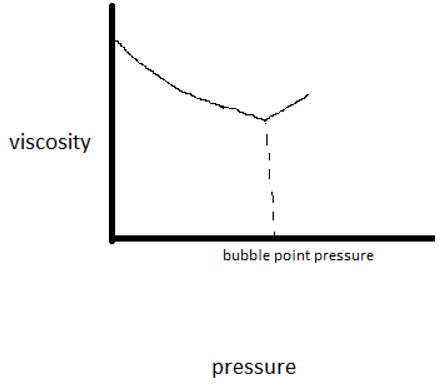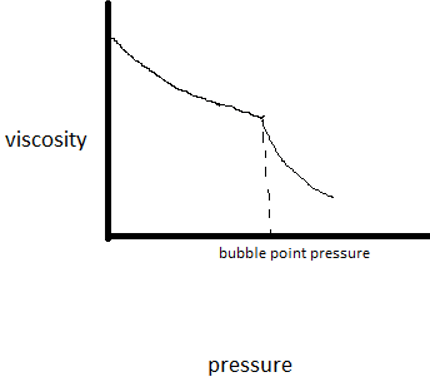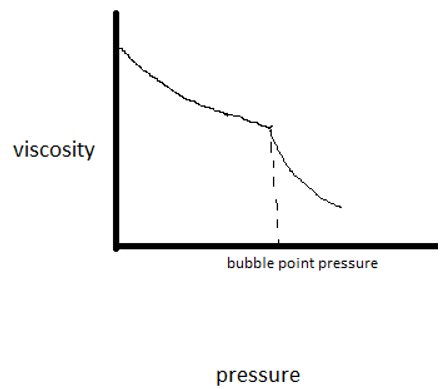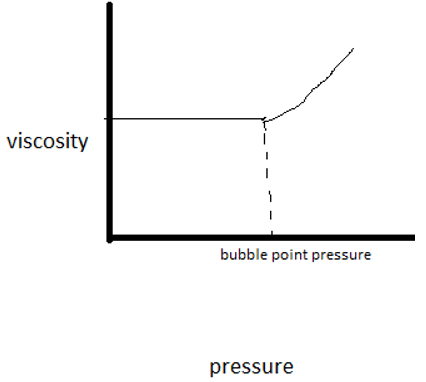This set of Petroleum Production Operations Multiple Choice Questions & Answers (MCQs) focuses on “Hydrocarbon Properties of Oil and Gas”.
1. When the gas has more than 95% of Methane then what type of gas is this?
a) Wet gas
b) Dry gas
c) Sour gas
d) Condensate Gas
View Answer
Explanation: When the gas has more than 95% of Methane then it is called a Dry gas and when it contains less than 95% Methane then it is called a Wet gas. If the natural gas contains more than 4 ppm of H2S then it is called a Sour gas. Condensate gas is a low density (high API) mixture of hydrocarbon liquids that are present in gaseous components in the natural gas.
2. What is the unit of Dynamic Viscosity?
a) cp
b) bp
c) jp
d) kp
View Answer
Explanation: The unit of Dynamic Viscosity is centipoises, abbreviated as cp. Dynamic viscosity is also known as absolute viscosity. The dimension of Dynamic viscosity is [ML-1T-1].
3. How many types of Viscosities are there?
a) 1
b) 2
c) 3
d) 4
View Answer
Explanation: Viscosity is divided into 2 types. These are Dynamic Viscosity and Kinetic Viscosity. Kinematic viscosity is equal to the ratio of Dynamic Viscosity to Density.
4. What is the oil formation volume factor?
a) The ratio of the volume of oil to the volume of gas at reservoir condition
b) The ratio of the volume of oil at the reservoir condition to the volume of oil at the surface condition
c) The ratio of the volume of oil to the volume of gas at surface condition
d) The ratio of the volume of oil at the reservoir condition to the volume of oil at the surface condition
View Answer
Explanation: The oil formation volume factor is the ratio of the volume of oil at the reservoir condition to the volume of oil at the surface condition. The ratio of the volume of gas to the volume of oil is equal to the Gas Oil ratio (GOR).
5. The compressibility factor is given by ________
a) The ratio of the volume of real gas to the volume of an ideal gas at the same pressure and temperature
b) The ratio of the volume of an ideal gas to the volume of real gas at the same pressure and temperature
c) Change in volume to change in original volume
d) Change in pressure to the change in volume
View Answer
Explanation: The compressibility factor is given by the ratio of the volume of real gas to the volume of an ideal gas at the same pressure and temperature. To correct for non-ideality we implement the compressibility (Z) factor in the simplest equation of state.
6. 0API equals to which of the following expression?
a) (141.5/Sp. Gravity) – 141.5
b) (141.5/Sp. Gravity) – 135.1
c) (141.5/Sp. Gravity) – 131.5
d) 131.5 – 141.5/Sp.Gravity
View Answer
Explanation: 0API equals to (141.5/Sp. Gravity) – 131.5. 0API is now used as a standard to identify the types of light and heavy crudes. Higher the 0API lighter the crude is and vice versa.
7. Which of the following is correct for viscosity vs pressure relation?
a) 
b)
c)
d)
View Answer
Explanation: When the pressure is above the bubble point pressure then viscosity decreases when we go from high-pressure region to bubble point pressure but as soon as it reaches the bubble point then the viscosity starts increasing to the lower pressure region.
Sanfoundry Global Education & Learning Series – Petroleum Production Operations.
To practice all areas of Petroleum Production Operations, here is complete set of 1000+ Multiple Choice Questions and Answers.
If you find a mistake in question / option / answer, kindly take a screenshot and email to [email protected]
- Practice Chemical Engineering MCQs
- Apply for Chemical Engineering Internship
- Check Petroleum Production Operations Books
- Check Chemical Engineering Books
